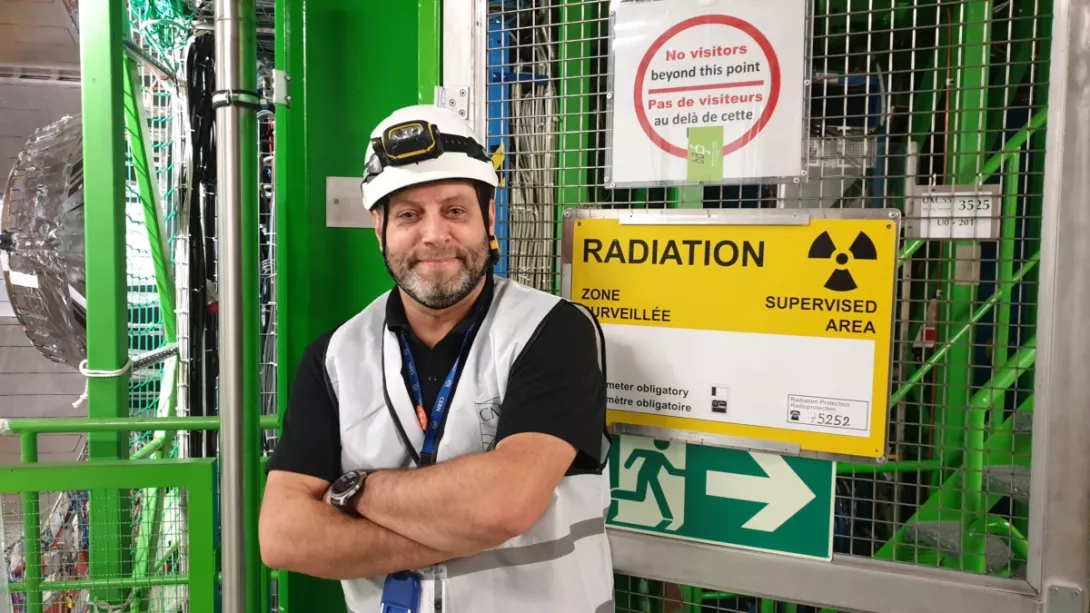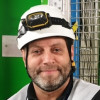
This interview was conducted for the "Alumni" section of Omalius magazine #26 of September 2022.
Can you briefly explain your career path?
When I was a student, we still did candis-licences. The Namur curriculum had an originality: it proposed a 6-month internship during the last year of the master's degree. I was lucky enough to do mine at CERN. This internship allowed me to do my thesis, which was about network databases. I was seduced by the international atmosphere and the exciting research taking place there. After my master's degree and a complementary DES in DGTIC, I was offered a consulting assignment at CERN for the implementation of the new human resources application. There, I applied for a position in management IT (finance and human resources), for which I had all the skills thanks to the quality of the training at UNamur. At the same time, what is done at CERN in terms of research in the field of particle physics is quite different from my training and I must admit that, at the beginning, I did not understand much about it. When I took part in a tour of the site, I realised that they were not very comprehensible to the general public. So I took a course to become a volunteer guide in 2005. In 2014, 20 years after joining CERN, I needed a new challenge and was given the opportunity to join the communication unit. In 2017, I became head of the visits and events department, which has about 30 staff members. CERN receives 250,000 visitors a year. There are exhibitions, public events, guided tours with a pool of more than 1,000 guides, the shop and all the technical support we need to provide.
There are also educational opportunities at CERN...
In addition to the internships we continue to offer throughout the year, CERN has created the High-School Student Internship Programme (HSSIP). In collaboration with our Member States, we invite young people aged 16-19 to come to CERN for 2 weeks to gain experience in science, technology, engineering and mathematics within an international organisation. This programme is a unique opportunity for secondary school students to learn about CERN, its technologies and physics. This includes shadowing a member of the scientific staff to learn about their work, organising visits and presentations. When I was involved in the Belgian edition of this programme, which requires the participation of two project leaders, one French-speaking and one Dutch-speaking, I naturally thought of UNamur. Together, we enabled 24 Belgian candidates to come to CERN in autumn 2021. The programme ended on 26 March 2022 with an event at UNamur, attended by several Belgian and European authorities.
The new CERN science portal
A new centre for science education and communication, designed by the architect Renzo Piano, is under construction and should be completed in the summer of 2023. This science portal will enable audiences of all ages and backgrounds to engage with CERN's scientific and technological discoveries through hands-on educational activities and exhibitions. It is a focal point for encouraging young people to pursue careers in science and technology.

What do you remember about your education at UNamur?
Both in the extra-academic activities and in the curriculum itself, the diversity is interesting. First of all, the multidisciplinary programme offered by UNamur allows you to acquire an open mind. At UNamur, you don't just do computer science in a course programme: you also do economics and philosophy. The student life brings us into contact with students from other disciplines. The closeness to the professors and the size of the groups also make it a human-sized university. Thanks to all these characteristics, I believe that the course has a rather 'bluffing' vision of the needs of the future graduate. It allows you to acquire a broader vision, anchored and adapted to today's society.
Is there anything you feel particularly strongly about?
Maintaining relations with Belgium and UNamur in particular. I am a "Namurian" at heart, of course! Beyond my personal attachment, I believe that there is an interest in being in contact and collaborating. UNamur is equipped with a particle accelerator, which brings it closer to the physics of CERN (particle physics and high energy). The UNamur researchers are world-renowned and do very high-level physics!
What advice would you give to students?

